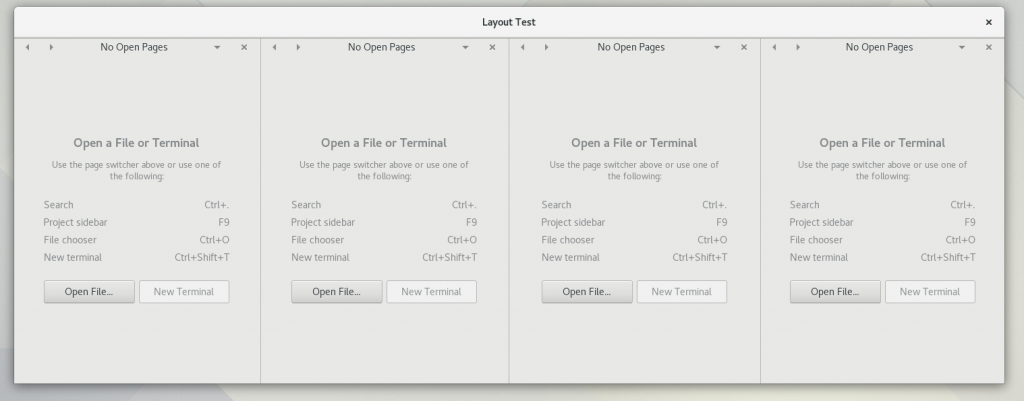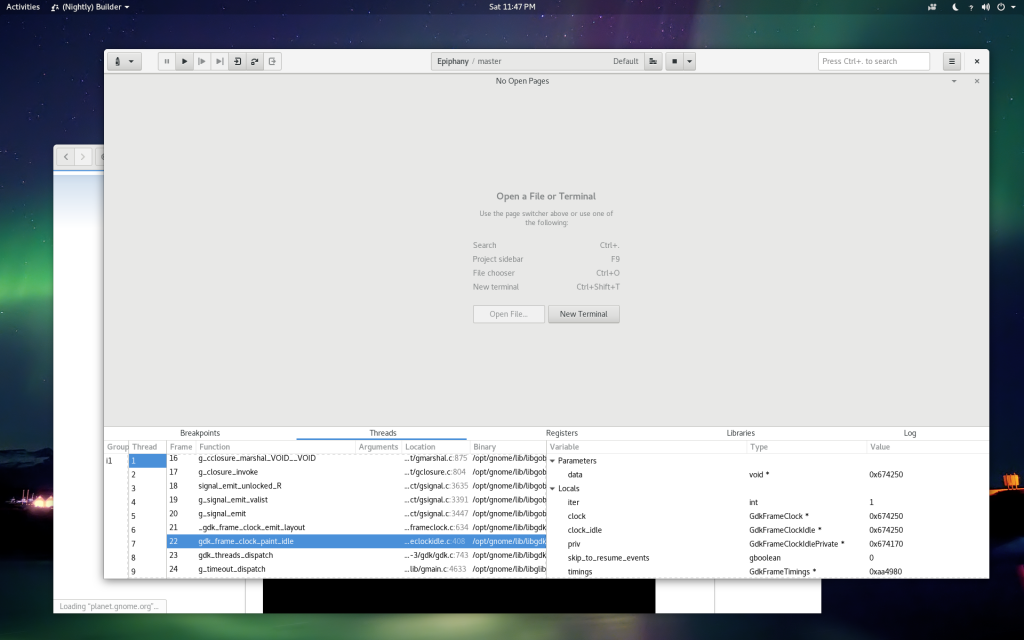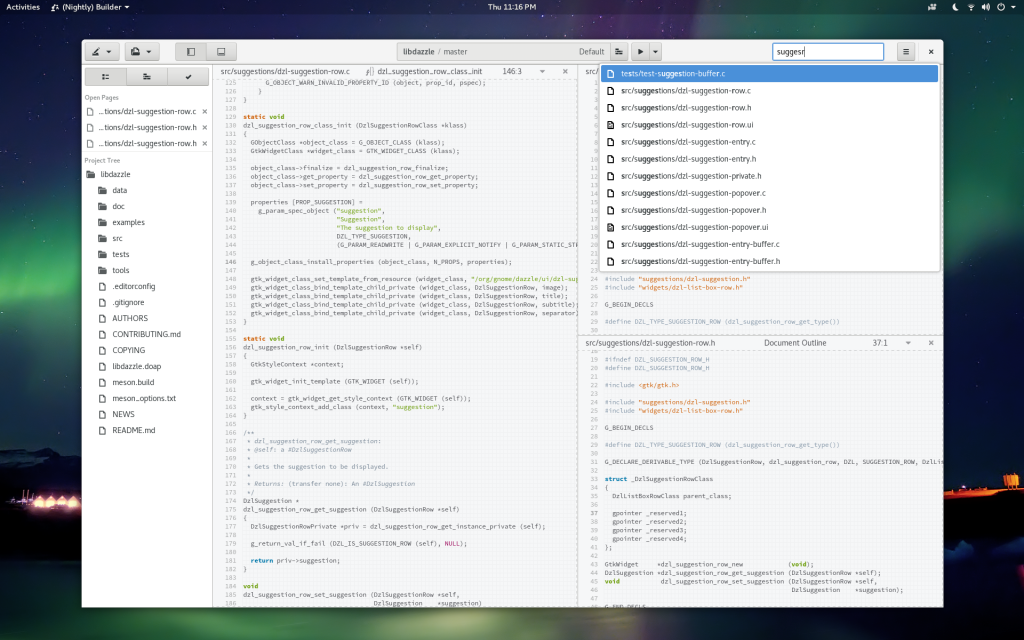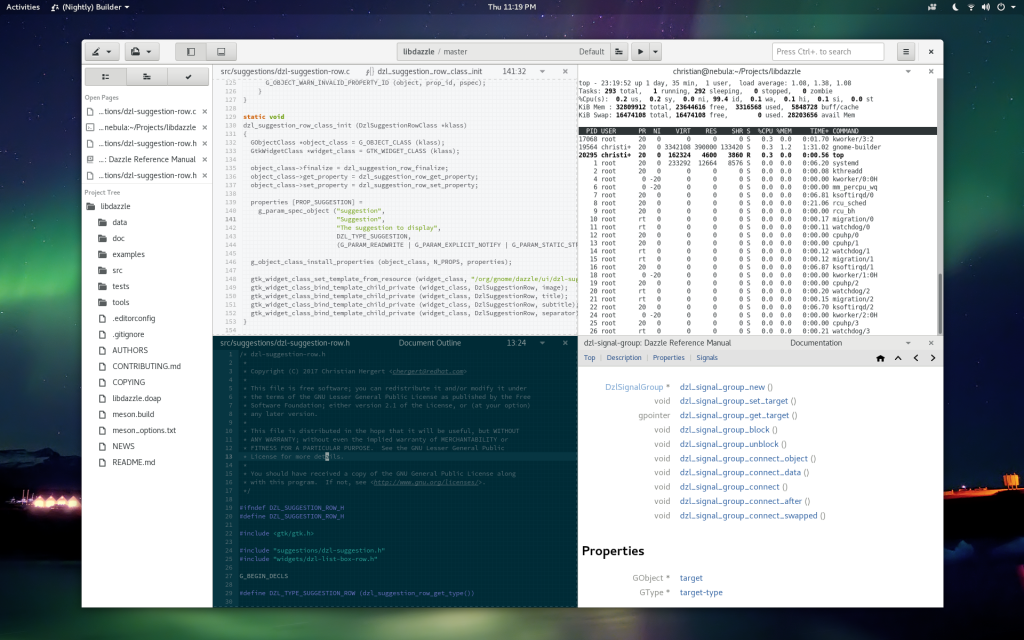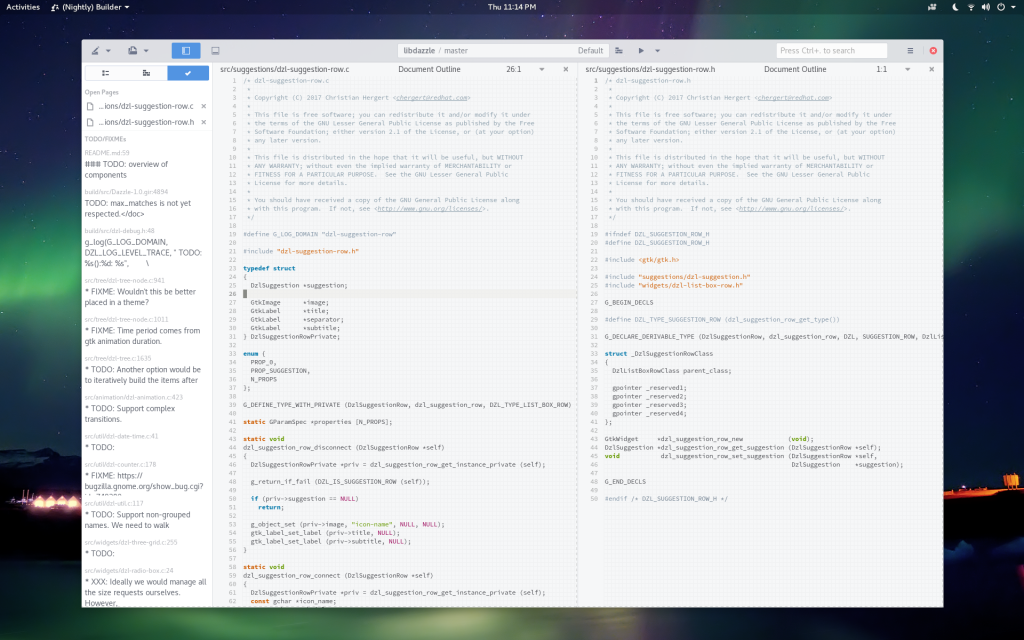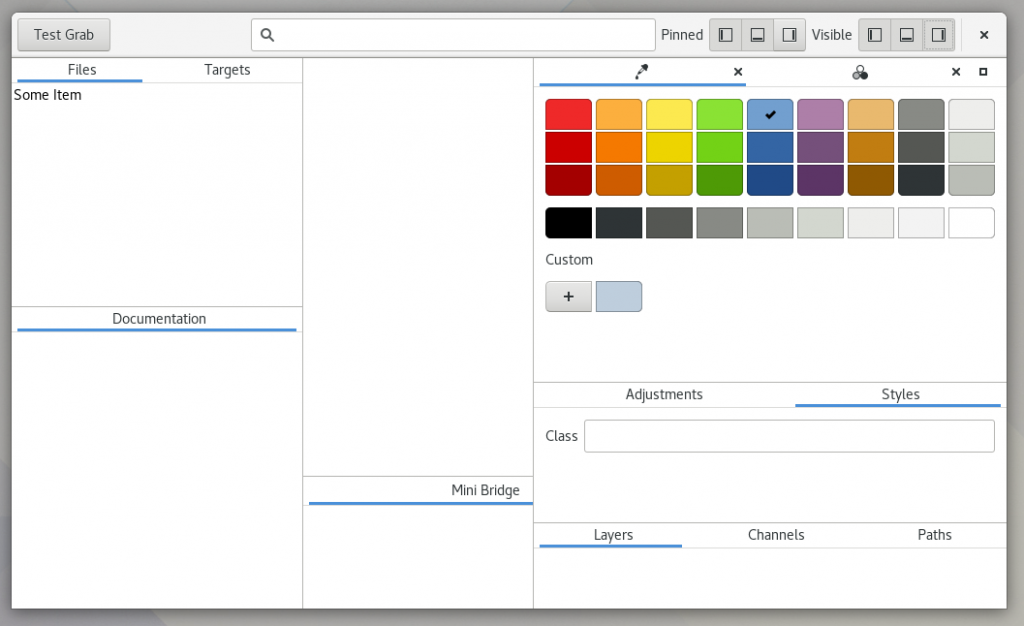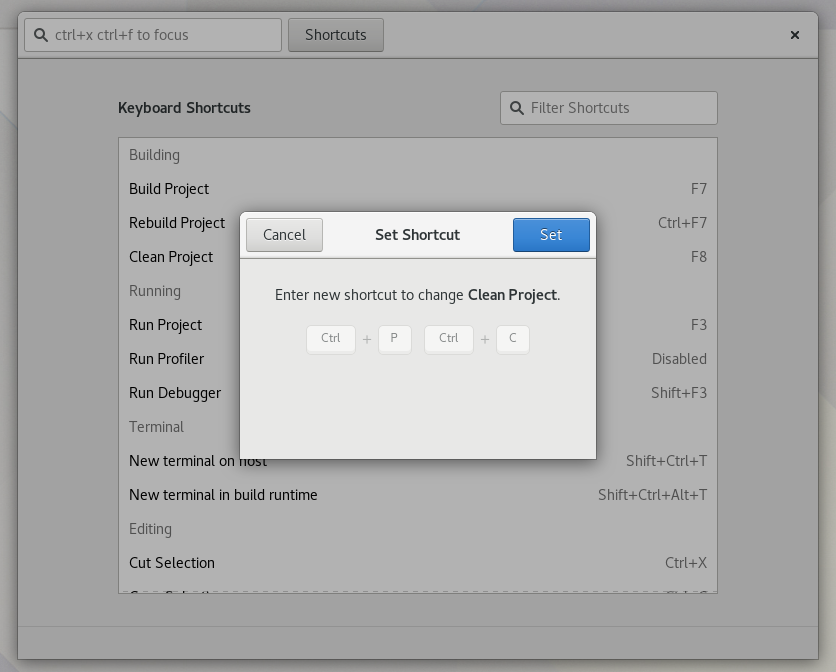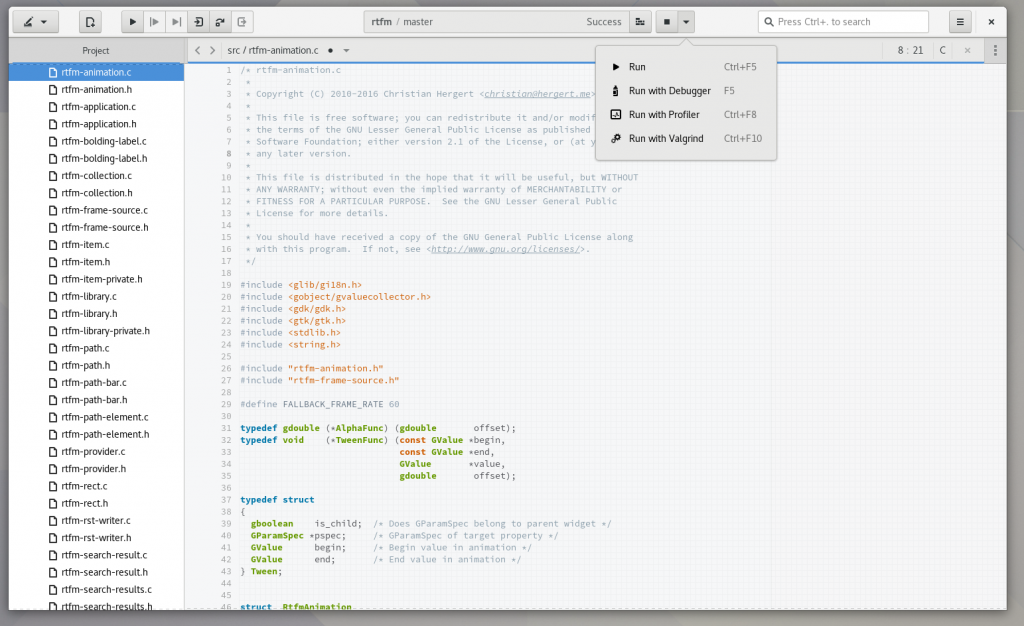There really is a lot of code in libdazzle already. So occasionally it makes sense to spotlight some things you might be interested in using.
Action Muxing
Today, while working on various Builder redesigns, I got frustrated with a common downfall of GAction as used in Gtk applications. Say you have a UI split up into two sections: A Header Bar and Content Area. Very typical of a window. But it’s also very typical of an editor where you have the code editor below widgetry describing and performing actions on that view.
The way the GtkActionMuxer works is by following the widget hierarchy to resolve GActions. Since the HeaderBar is a sibling to the content area (and not a direct ancestor) you cannot activate those actions. It would be nice for the muxer to gain more complex support, but until then… Dazzle.
It does what most of us do already, copy the action groups between widgets so they can be activated.
// my_countainer should be either your headerbar or parent of it
// my_view is your view containing the attached action groups
// the mux key is used to remove old action groups
dzl_gtk_widget_mux_action_groups (my_container,
my_view,
"a mux key");
Exciting, I know.
Multi Paned
The number of times I’ve been asked if Gtk has a GtkPaned that can have multiple handles is pretty high. So last year, while working on Builder’s panel engine, I made one. It also gained some new features this week as part of our Builder redesign.
It knows how to handle minimum sizes, natural sizes, expanding, dragging, and lots of other tricky bits. There are lots of really annoying bits about GtkPaned from it’s early days that make it a pain when dealing with window resizes. MultiPaned tries to address many of those and do the right thing by default.
It should be strictly a step up from using GtkPaned of GtkPaned of GtkPaned.
